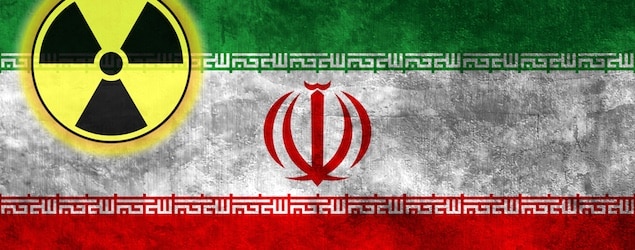The Mythology of the Iran Nuclear Deal

When defending the Iran nuclear deal, the Obama administration and its surrogates made claims that seemed, at least to some people, plausible. For a long time, I’ve argued that the deal was predicated on evading Iran’s jihadist character and malignant goals, and that the deal’s selling points were fantastical. Some people felt that “only time will tell”; so let’s consider two of the administration’s claims.
The nuclear deal, Barack Obama claimed, will “ensur[e] that all pathways to a bomb are cut off.” This of course was a central pillar of the case for the deal. Remember the assurances about “anytime, anywhere” inspections of Iran’s nuclear facilities? That was a hyped up talking point that the administration quickly dropped. What about getting a full accounting of Iran’s past nuclear research, including its military dimensions (such as warhead design)? No, according to John Kerry, we shouldn’t be “fixated” on that, we just have to move on. What about the shutting of “all pathways” to a bomb? Listen to James Clapper, director of national intelligence, who testified before Congress this month: “We do not know whether Iran will eventually decide to build nuclear weapons,” adding that if the regime “chooses to,” it maintains the “ability to build missile-deliverable nuclear weapons.”
Or consider another salient claim: By reintegrating Iran into the global economy, the deal could strengthen (putatively) friendly elements within Iran. Obama told one interviewer: “And then I think there are others inside Iran who think that [opposing the United States, seeking to destroy Israel, causing havoc in the region] is counterproductive. And it is possible that if we sign this nuclear deal, we strengthen the hand of those more moderate forces inside of Iran.”
Predictably, the inflow of dollars has gone to Iran’s state-owned or semistate-backed industries (the theocracy and its military vanguard dominate the economy). Reiterating what has been known for decades, James Clapper told Congress that the Tehran regime is “the foremost state sponsor of terrorism” and that Iran and its proxy forces “remain a continuing terrorist threat to U.S. interests and partners worldwide.” Beyond the financial gains that bolster the regime, what impact has the deal had on Tehran’s hostility toward us? It’s fueled that hostility, as I argued in an earlier post, a fact that goes under-appreciated.
Last week, with something like a “carnival atmosphere,” tens of thousands marched in Tehran “chanting ‘Death to America and Israel’ and waving anti-Western placards,” celebrating the “37th anniversary of the country’s 1979 Islamic revolution.” The regime actively inculcates animosity toward the West. Ponder the outlook of one 22-year-old Iranian who attended the festivities: “I am happy that I was able to come here today, and as an Iranian I can put my fist in America’s mouth and say Death to America.”
To revisit major selling points of the Iran nuclear deal is to see just how detached from reality they were.
(Originally published on Times of Israel.)
For more news on ARI’s fight for a rational culture, subscribe to Impact Weekly.



